Photo: Peabody FC of the Allied American Football Association of Philadelphia, 1913-1914
After the formation of the United States Foot Ball Association (known today as the US Soccer Federation) in April of 1913, one of the first orders of business was establishing a national cup tournament. G.W. Manning, the USFA’s first president, wrote in the 1913-14 Spalding Guide, “In its first year of existence, practically without any funds, still in the throes of organization work and subsequent factional disturbances, the United States of America Foot Ball Association must deal with questions of greatest import: the creation of a national challenge cup competition, to be competed for by professional and amateur clubs for the first time in the history of football in this country.”
While the American Football Association had started its American Cup tournament in 1885, that tournament had in actuality been a regional tournament. The USFA’s interest in establishing a truly national tournament reflected its desire to be a truly national organization. It also was a reflection of the new organization’s desire to field a US national team in the preeminent international soccer tournament of the day, the Olympics, which were to next take place in 1916. Manning explained, “The competition will…enable the officers and members of the council to look over the material that presents itself on the fields in the cup ties for the purpose of selecting representative teams in inter-state games as well as national representative matches.” And, of course, it was hoped that a truly national competition would help to boost the soccer in the American sporting landscape.
Among those on the organizing committee for the tournament that was originally known as the National Challenge Cup and is known today as the US Open Cup was Oliver Hemingway, secretary of the Allied American Football Association of Philadelphia who, along with Allied American president John B. Farrell and Referees’ Association of Philadelphia president Douglas Stewart, had been instrumental in the founding of the USFA.
On Sept. 12, 1913, the USFA sent out invitations to participate in the tournament to 287 clubs. Forty clubs—from as far north as Massachusetts, down to Philadelphia, and as far west as Chicago and Detroit—entered the tournament. Seven clubs from two Philadelphia leagues, the amateur Allied American League and the professional Pennsylvania League, were among those who entered the tournament:
- Bethlehem FC (Allied American League)
- Disston AA (Allied American League)
- Kensington AA (Allied American League)
- Peabody FC (Allied American League)
- West Philadelphia FC (Allied American League)
- Tacony FC (Pennsylvania League)
- Wissinoming FC (Pennsylvania League)
First round cup play in the Pennsylvania District would begin on Saturday, Nov. 1, 1913.
First Round
Peabody, West Philadelphia, and Wissinoming drew byes for the first round. The only other team from Pennsylvania, Braddock FC, a club from Braddock, Pa., a steel town located just outside of Pittsburgh, also drew a bye.
Bethlehem hosted Disston. While the Philadelphia Inquirer match report on Nov. 2 described that “for the first fifteen minutes the game was fast and close,” Bethlehem’s superiority quickly asserted itself and the team soon tallied its first goal. Bethlehem “played a fine combination passing game, the players work at times completely bewildering the visitors.” By the end of the match, Bethlehem were 7–0 victors.
Roger Allaway writes in Corner Offices and Corner Kicks that Bethlehem may have been the first team to win a National Challenge Cup game. Because Pennsylvania and Massachusetts Blue Laws prohibited sporting events on Sundays, first round games in Bethlehem, Philadelphia, and New Bedford were scheduled for the Saturday. “The game in Philadelphia produced a forfeit, so either Bethlehem or New Bedford FC has to have been the first winner.”
Tacony were scheduled to meet Kensington in Challenge Cup play but the they were also booked to play Trenton Hibernians in first round American Cup play. Having won the American Cup in 1910 and making it to the deciding tie of the 1913 American Cup where they lost to Paterson True Blues in a final that stretched to three games, Tacony decided to forfeit to Kensington. The Inquirer commented on Nov. 3, “There is something radically wrong in the arrangements when a team is scheduled to play two important cup games in one afternoon.” Tacony defeated Trenton 3–1 and would go on to meet Bethlehem in the 1914 American Cup final.
Second Round
On Nov. 10, the Inquirer reported the draws for the second round to be played on Dec. 6, with Wissinoming hosting Peabody and West Philadelphia hosting Kensington. Bethlehem would travel to western Pennsylvania to face Braddock at Forbes Field, home of the Pittsburgh Pirates. The report also noted that the USFA and the AFA had agreed to work together to avoid any further forfeited games from scheduling conflicts.
In Pittsburgh on Dec. 6, Bethlehem took the lead after 12 minutes of play with a goal from future National Soccer Hall of Famer Tommy Fleming. The South Bethlehem Globe reported on Dec. 8, “On the restart Braddock changed its tactics and started to rough it and very soon several of Bethlehems’ best men were out of the game for a time and it was entirely due to this that Braddock scored.” Braddock not only scored, they scored two unanswered goals in the space of minutes before Fleming leveled from the penalty spot after a Braddock player handled the ball in the box.
The Inquirer reported on Dec. 7 that, with the game tied at 2–2, Bethlehem wanted to play the replay back in Bethlehem. But, in a decision that would cost the home team, “Braddock insisted on playing an extra half hour.” With the final minutes of extra time trickling away in a game that the Globe reported “toward the close became very rough and unsportsmanlike due to the inability of the referee to take complete control,” Fleming scored the winner after running the length of the pitch while “dribbling the ball very cleverly.”
Back in Philadelphia at Torresdale Avenue, amateur club Peabody surprised everyone by playing professional club Wissinoming to a 1–1 draw in what the Inquirer match report of Dec. 7 described as “a splendidly fought game.” Wissinoming scored first after 25 minutes before Peabody responded with a second half equalizer. The two teams met for the replay on Dec. 13 on Peabody’s home grounds at Washington Park, located at 26th Street and Allegheny Avenue. In this time before substitutions, Wissinoming suffered a set back when their right full back was injured after only six minutes of play. Peabody again surprised, this time with a 3–0 win to advance to the third round.
Playing at 44th Street and Parkside Avenue, West Philadelphia made short work of Kensington, defeating them 4–1.
Third Round
For the third round, on Jan. 24, Peabody would host St. George FC of New York City while West Philadelphia would travel to New Bedford in Massachusetts. Bethlehem would again be on the road to face Brooklyn Field Club on Jan. 25. As it turned out, weather would be a factor in each game.
In Philadelphia, the conditions were bad enough that the Inquirer reported on Jan. 25, “For the first time in many years, not a single soccer game was played in Philadelphia or the vicinity.” Peabody was scheduled to host St. George but “Washington Park, which is usually playable under any conditions, was totally unfit for soccer.” The game was rescheduled for Jan. 31 but Oliver Hemingway reported in the 1914-15 Spalding guide that “St. George FC forfeited as it could not get a team together to make the second trip.” And so, Peabody. who had surprised everyone by beating professional club Wissinoming in the second round, advanced to the quarterfinals.
There was an element of good fortune in West Philadelphia’s opponent, New Bedford, making it to the third round. After defeating Farr Alpacas of Holyoke, Mass. 3–1 on Nov. 1 in the first round, Farr Alpacas filed a protest because New Bedford had fielded two players who were not listed on the roster. The USFA ordered the match to be replayed at New Bedford and Farr Alpacas elected to forfeit rather than experience further financial hardship by once again playing away from home.
The Inquirer reported on Jan. 25, “Despite sodden rains which made the football field resemble a swamp, the Philadelphians played rings around their opponents in the first half.” But, West Philadelphia could not convert its dominance to find the back of the net. With time running out, New Bedford tallied on a breakaway before scoring again to emerge 2–0 winners. The Inquirer called it an “irony of fate” that West Philadelphia could dominate two-thirds of the game only for the home team to “score a couple of cheap goals in the final eight minutes of play, and waltz off with an unearned victory.”
The wet weather also made for heavy conditions when Bethlehem traveled to Marquette Oval to face Brooklyn FC. The Inquirer reported on Jan. 26 that, while the ground conditions “materially affected” Bethlehem, the conditions “suited the weighty players of the locals, who appeared to revel in the mud.” Nevertheless, neither team could find an advantage from open play. Brooklyn finally scored through a penalty kick, which would prove to be enough to give Bethlehem their first loss of the season in all competitions. They wouldn’t lose another match for nearly fourteen months.
Bethlehem may have been eliminated on the field of play but they continued to fight. On Jan. 30, the Inquirer printed the text of a protest filed by Bethlehem with the USFA, which noted that, while the game was scheduled to start at 2:30pm, Brooklyn failed to show up until 3pm. In Bethlehem’s view, “the referee exceeded his powers and should have either started the game before he did or forfeited the game to Bethlehem.”
Bethlehem also claimed that two of Brooklyn’s players—including H. Hinds, who had scored the penalty kick—were being investigated by the AFA for taking payments when registered as amateurs. Furthermore, Bethlehem alleged that Hinds had failed to sign his National Challenge Cup form himself and had used a proxy to sign for him in his stead. Finally, Bethlehem pointed out that Brooklyn’s goalkeeper, W. Haughie, was not on the roster that had been provided them.
While they waited for the USFA’s decision, Bethlehem defeated Peabody 4–0 in Allied League play on Feb. 7 with Fleming scoring two of Bethlehem’s goals. The same day, West Philadelphia defeated Disston 9–1. On Feb. 16, the Inquirer reported that Bethlehem’s protest had been dismissed. The Steel Workers’ cup run was over.
Quarterfinals
The draw for quarterfinals of the National Challenge Cup was announced the same day as the dismissal of Bethlehem’s protest. Peabody drew New Bedford at home. Given that they “had the advantage of grounds,” the Inquirer reported on Feb. 16 that “it would not be in the least be surprising” if Peabody made it to the semifinals. However, Peabody ended up agreeing to play New Bedford away on March 21. In a scenario familiar to followers of recent US Open Cup tournaments, Oliver Hemingway reported in the 1914-15 Spalding Guide, “The game was drawn to be played in Philadelphia, but for a consideration, Peabody agreed to stage the game in New Bedford.”
When the two teams met in front of “a crowd of 3500 enthusiasts,” the Inquirer match report on March 22 said, “The Philadelphians started off like winners.” The good start did not last long and by the half Peabody was down 2–0. The resumption of play saw the home team score two more quick goals. The Inquirer reported that Peabody “never gave up” and “persistent attacks” resulted in a consolation goal before the final whistle brought a close to both the 4–1 quarterfinal contest and Philadelphia’s run in the first US Open Cup.
New Bedford would face Brooklyn FC, the team that had eliminated Bethlehem in the third round, in the semifinals on April 18, 1914. Brooklyn FC would be the 2–1 winners. It would be an all-Brooklyn final with Brooklyn FC facing Brooklyn Celtic on May 16, 1914 in front of some 10,000 spectators at Coates Field in Pawtucket, R.I. Brooklyn FC scored in the third minute before Brooklyn Celtic equalized in the 27th minute from a penalty. The game would remain deadlocked for the next 60 minutes when, with three minutes of time remaining, Brooklyn scored the winner to become the first US Open Cup champions.
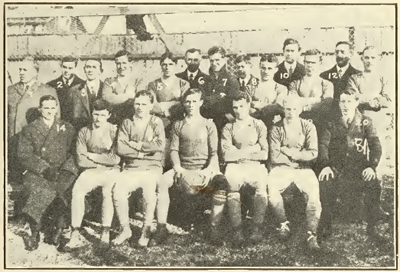

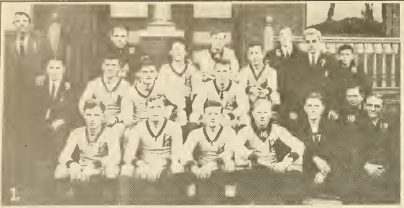

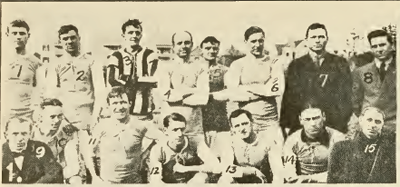
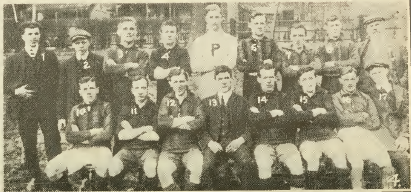

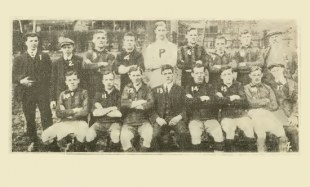

Comments